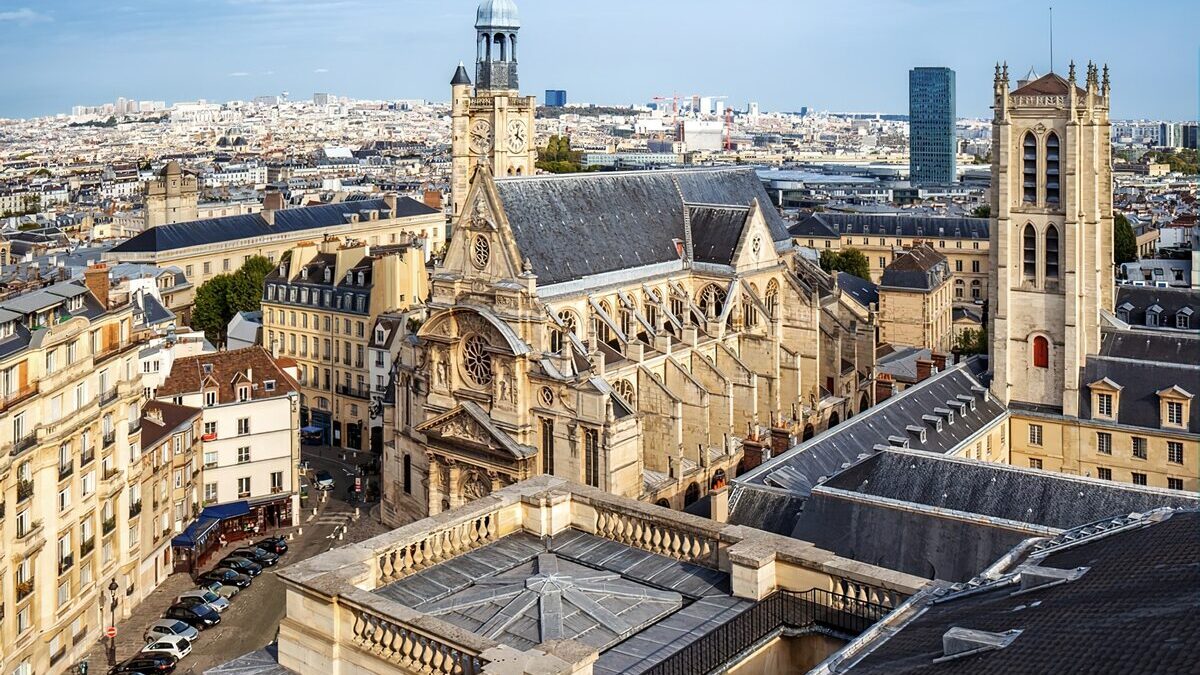Discover the Timeless Majesty of Pont du Gard

Discover the Timeless Majesty of Pont du Gard
Discover the Timeless Majesty of Pont du Gard: Your Ultimate Guide to France’s Ancient Aqueduct
Welcome to Pont du Gard, one of the most remarkable and well-preserved Roman aqueducts in the world. Located in the South of France, this architectural marvel is not only a testament to ancient Roman engineering but also a UNESCO World Heritage site that attracts visitors from around the globe. This comprehensive guide provides everything you need to know for an enriching visit to Pont du Gard, including its history, key attractions, unique features, and practical information for tourists.

A Glimpse into the History of Pont du Gard
Roman Engineering Masterpiece
Pont du Gard was constructed in the 1st century AD as part of a larger aqueduct system to supply water to the Roman colony of Nemausus, now known as Nîmes.
- Construction Period: Built around 50 AD, the aqueduct spans the Gardon River and was constructed using locally quarried limestone.
- Roman Engineers: The construction was overseen by Roman engineers who employed advanced techniques and knowledge of hydraulics to ensure the efficient flow of water.
- Water Supply: The aqueduct transported water over 50 kilometers from the Eure spring near Uzès to Nîmes, supplying the city with fresh water for baths, fountains, and domestic use.
Medieval and Modern History
Pont du Gard has played various roles throughout its long history, adapting to the needs of the surrounding communities.
- Medieval Period: During the Middle Ages, the aqueduct fell into disuse as the Roman water system deteriorated. However, the bridge itself remained an important crossing point over the Gardon River.
- Restoration Efforts: In the 18th century, significant restoration efforts were undertaken to preserve the structure. Further conservation work has continued into the modern era to maintain its integrity and historical value.
UNESCO World Heritage Site
In 1985, Pont du Gard was designated a UNESCO World Heritage site in recognition of its historical significance and engineering brilliance.
- Cultural Heritage: The site is celebrated for its architectural excellence and as a testament to the ingenuity of Roman engineering.
- Tourist Attraction: Today, Pont du Gard is one of France’s most visited ancient monuments, drawing tourists with its breathtaking views and historical importance.

Key Attractions of Pont du Gard
The Aqueduct Bridge
Pont du Gard is the highest of all Roman aqueduct bridges and one of the best-preserved.
- Three Tiers: The bridge is constructed in three tiers of arches, standing 48 meters high. The upper tier, which carried the water channel, features 35 arches, while the middle and lower tiers have 11 and 6 arches respectively.
- Architectural Precision: The precision of the stone masonry, with blocks fitted together without mortar, showcases the advanced engineering skills of the Romans.
- Walking Path: Visitors can walk along the bridge’s lower tier, offering a close-up view of the structure and stunning vistas of the surrounding landscape.
Pont du Gard Museum
The museum at Pont du Gard offers an in-depth look into the history, construction, and significance of the aqueduct.
- Exhibits: The museum features interactive exhibits, models, and multimedia presentations that explain the engineering techniques used by the Romans and the aqueduct’s role in ancient society.
- Artifacts: View a collection of Roman artifacts, including tools, pottery, and inscriptions, that provide insights into daily life in Roman times.
The Site and Surroundings
The area around Pont du Gard is a protected natural and cultural landscape, perfect for exploration and leisure activities.
- Scenic Trails: Explore the scenic walking trails that wind through the surrounding countryside, offering picturesque views of the aqueduct and the Gardon River.
- Picnic Areas: Enjoy a picnic in the designated areas, surrounded by the natural beauty of the region. These spots provide a relaxing way to take in the historical ambiance.
- Swimming and Canoeing: The Gardon River offers opportunities for swimming and canoeing, allowing visitors to experience the site from a unique perspective on the water.
Unique Features of Pont du Gard
Architectural Marvel
Pont du Gard stands as a testament to the ingenuity and skill of Roman engineers and builders.
- Limestone Construction: The aqueduct is constructed from locally sourced limestone, with precisely cut blocks that fit together without mortar, relying on gravity and the weight of the stones for stability.
- Gradient Design: The slight gradient of the aqueduct, which drops only 2.5 centimeters over its entire length, demonstrates the Romans’ advanced understanding of hydraulics and their ability to transport water efficiently over long distances.
- Durability: The structure’s durability and longevity are testaments to the high-quality materials and construction techniques employed by the Romans.
Historical Significance
Pont du Gard offers valuable insights into the Roman Empire’s impact on infrastructure and urban development.
- Water Supply: The aqueduct played a crucial role in the development of Nîmes, supporting the city’s growth and the luxurious lifestyle of its inhabitants.
- Engineering Techniques: The construction methods and tools used by Roman engineers influenced subsequent generations of builders and architects, laying the groundwork for modern engineering practices.
Cultural and Natural Integration
The integration of Pont du Gard into its natural surroundings enhances its aesthetic and cultural value.
- Harmonious Design: The aqueduct blends seamlessly with the landscape, highlighting the Romans’ ability to harmonize their constructions with the natural environment.
- Biodiversity: The surrounding area is rich in biodiversity, with a variety of plant and animal species that thrive in the Mediterranean climate, providing a unique opportunity to appreciate both natural and historical beauty.
Practical Information for Tourists
Getting There
Pont du Gard is located near the town of Vers-Pont-du-Gard in the Occitanie region of Southern France, and is accessible by various modes of transportation.
- By Car: The site is easily accessible by car, with ample parking available. It is located about 25 kilometers from Nîmes and 30 kilometers from Avignon.
- By Train: The nearest train stations are in Nîmes and Avignon, both of which have connections to major cities in France. From there, you can take a bus or taxi to Pont du Gard.
- By Bus: Regular bus services operate from Nîmes and Avignon to Pont du Gard, providing a convenient and affordable option for visitors.
Opening Hours and Tickets
Pont du Gard is open to visitors year-round, with varying hours depending on the season.
- Opening Hours: The site is typically open from 9:00 AM to 6:00 PM in the winter and from 9:00 AM to 8:00 PM in the summer. It is advisable to check the official website for the most up-to-date hours.
- Tickets: Tickets can be purchased at the entrance or online. The ticket price includes access to the aqueduct bridge, the museum, and the surrounding park. Discounts are available for students, seniors, and families.
Accessibility
Pont du Gard is committed to providing a welcoming and accessible experience for all visitors.
- Wheelchair Access: The site is wheelchair accessible, with paved paths and ramps that provide access to the main viewing areas and facilities.
- Guided Tours: The site offers guided tours in multiple languages, providing in-depth information about the history and significance of Pont du Gard.

Tips for an Enjoyable Visit
Plan Your Visit
To make the most of your time at Pont du Gard, it’s helpful to plan ahead and prioritize the attractions and activities that interest you the most.
- Early Arrival: Arrive early to avoid the crowds and enjoy the site in the soft morning light, which is ideal for photography.
- Guided Tours: Consider joining a guided tour to gain deeper insights into the history and significance of Pont du Gard and its numerous features.
Capture the Moment
Pont du Gard offers numerous opportunities for stunning photographs. Here are some tips to capture the best shots:
- Golden Hour: Visit during the golden hour (just after sunrise or before sunset) for the best lighting and most beautiful photos.
- Panoramic Views: Capture the grandeur of the aqueduct from different angles, including from the riverbanks and the scenic trails.
- Detail Shots: Don’t forget to take close-up shots of the intricate stonework and the interplay of light and shadow on the arches.
Must-See Highlights at Pont du Gard
The Aqueduct Bridge
The aqueduct bridge itself is the star attraction at Pont du Gard.
- Three Tiers: The bridge is constructed in three tiers of arches, standing 48 meters high. The upper tier, which carried the water channel, features 35 arches, while the middle and lower tiers have 11 and 6 arches respectively.
- Architectural Precision: The precision of the stone masonry, with blocks fitted together without mortar, showcases the advanced engineering skills of the Romans.
- Walking Path: Visitors can walk along the bridge’s lower tier, offering a close-up view of the structure and stunning vistas of the surrounding landscape.
Pont du Gard Museum
The museum at Pont du Gard offers an in-depth look into the history, construction, and significance of the aqueduct.
- Exhibits: The museum features interactive exhibits, models, and multimedia presentations that explain the engineering techniques used by the Romans and the aqueduct’s role in ancient society.
- Artifacts: View a collection of Roman artifacts, including tools, pottery, and inscriptions, that provide insights into daily life in Roman times.
The Site and Surroundings
The area around Pont du Gard is a protected natural and cultural landscape, perfect for exploration and leisure activities.
- Scenic Trails: Explore the scenic walking trails that wind through the surrounding countryside, offering picturesque views of the aqueduct and the Gardon River.
- Picnic Areas: Enjoy a picnic in the designated areas, surrounded by the natural beauty of the region. These spots provide a relaxing way to take in the historical ambiance.
- Swimming and Canoeing: The Gardon River offers opportunities for swimming and canoeing, allowing visitors to experience the site from a unique perspective on the water.
Dining and Shopping at Pont du Gard
Dining Options
Pont du Gard offers a variety of dining options, ranging from casual cafes to fine dining restaurants, allowing visitors to enjoy a meal while taking in the scenic views.
- Restaurant Les Terrasses: Located on-site, this restaurant offers a menu featuring local cuisine and seasonal dishes, with a beautiful terrace overlooking the aqueduct.
- Cafes: Several cafes and snack bars are available near the entrance and throughout the site, offering light meals, sandwiches, and refreshments.
- Picnic Areas: Visitors are welcome to bring their own food and enjoy a picnic in one of the designated areas, surrounded by the natural beauty of the region.
Souvenir Shops
The gift shops at Pont du Gard offer a wide range of souvenirs, books, and local products that make perfect mementos of your visit.
- Local Crafts: Look for handmade crafts, pottery, and jewelry created by local artisans, reflecting the cultural heritage of the region.
- Books and Prints: Discover a selection of books and prints related to the history, architecture, and significance of Pont du Gard and other Roman sites.
- Gourmet Products: Take home gourmet products such as olive oil, wine, and honey, which are produced in the surrounding area and renowned for their quality.
Practical Tips for Visitors
Best Time to Visit
The best time to visit Pont du Gard is during the spring and fall, when the weather is mild and the crowds are smaller.
- Peak Season: The peak tourist season is during the summer months of July and August, when the site is busiest, and most festivals and events take place.
- Off-Peak Season: Visiting during the shoulder seasons of April-June and September-October offers a more relaxed experience, with fewer crowds and pleasant weather.
Guided Tours and Audio Guides
To enhance your visit, consider joining a guided tour or renting an audio guide.
- Guided Tours: The site offers guided tours led by knowledgeable guides who provide in-depth information about the history, architecture, and significance of Pont du Gard.
- Audio Guides: Audio guides are available in multiple languages and provide detailed commentary on the key features and highlights of the aqueduct.
Conclusion
Pont du Gard stands as a testament to the ingenuity and skill of ancient Roman engineers, offering visitors an unparalleled journey through history and architecture. From the awe-inspiring three-tiered aqueduct bridge and the informative museum exhibits to the scenic trails and relaxing picnic areas, Pont du Gard provides an unforgettable experience for all who visit. Plan your trip to Pont du Gard and immerse yourself in the beauty, history, and engineering brilliance of this iconic symbol of Roman heritage. Embrace the opportunity to explore, discover, and create lasting memories in this magnificent architectural wonder of the ancient world.



